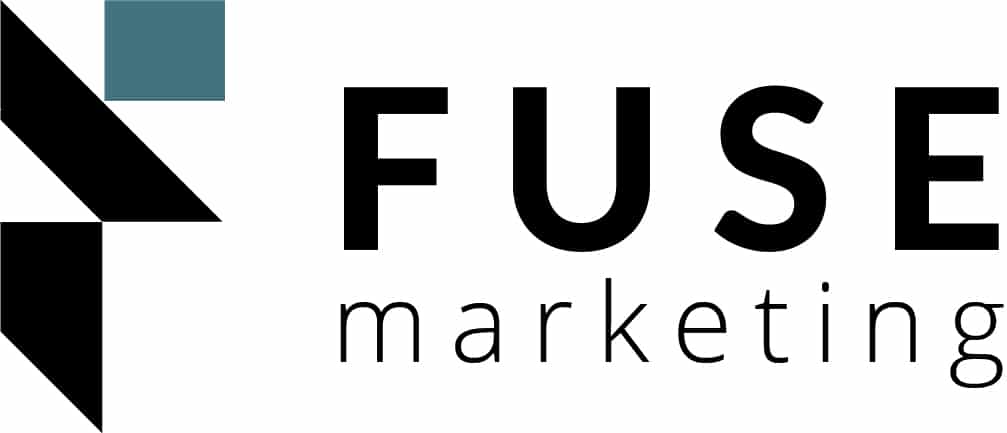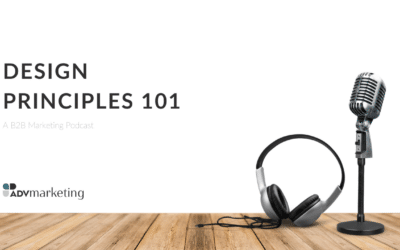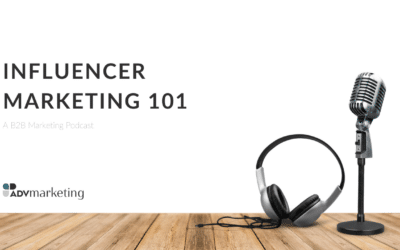In today’s data-driven world, understanding the performance of your marketing efforts is crucial for success – but how do you know if your marketing is driving results?
Join Morgan and Sarah on this episode of Marketing Matters, as they dive deep into the world of marketing analytics and explore the art of benchmarking. They introduce what benchmarking is, why you should do it, and how to get started from ground zero. Whether you’re a seasoned marketer or just beginning, this episode will empower you to make data-driven decisions that boost your marketing strategy and drive results.
Highlights:
- What is benchmarking?
- How do I begin benchmarking from scratch?
- What role do trends play in creating effective benchmarks?
- How can I use benchmarks to predict?
Follow us!
ADV Marketing – advmarketing.com
Be sure to subscribe and leave a comment or review!
Marketing Matters is brought to you by ADV Marketing
We’re excited to be bringing you this podcast produced by our company, ADV Marketing. ADV Marketing develops high quality and cost-effective marketing materials for a wide range of businesses. Our relationship driven business model and customized marketing solutions makes us the perfect partner for small businesses looking to grow. I’m Sarah, creative director at ADV Marketing. Join me here with the rest of my team on Marketing Matters every other Monday to discuss business to business marketing topics. Now let’s get into the episode.
Sarah Roberts
Welcome to Marketing Matters, a podcast where we discuss all things marketing related and how it applies to your business. So I’m Sarah, so happy to be here with y’all again in the same outfit as the last episode, but ignore that. And then I have with me Morgan, one of our account managers. She was featured on the last episode and introduced what she did. So if you feel like it, go check out that episode to learn more about Morgan. But Morgan introduce today’s topic for us.
Morgan Hutcherson
Yeah. So this is probably one of my favorite topics of topics in marketing, and that is analytics. And specifically today we’re talking about benchmarking. So Sarah, give us a little introduction to what benchmarking is.
Sarah Roberts
Yes, so benchmarking is what answers the question, “How do I know I am where I need to be in terms of analytics?” So you can collect all the data, you can get all the reach, impressions, engagements, whatever it is that LinkedIn or your website tracks. But unless you have some sort of point to relate it to, what does it mean? Like, is it good? Is it bad? What is good? What is bad? How are my competitors doing? Am I in the same realm? What if I’m not? Like, what do I do about that? Benchmarking is the first step to understanding if you’re okay in that.
Morgan Hutcherson
Mm hmm. So you’re starting to benchmark, right? And let’s say, like most companies, especially a lot of our clients, they aren’t looking at analytics for marketing. They’ve got bigger fish to fry. That’s not a concern. So what do you do if you don’t have a benchmark or you don’t even know how to get the benchmark down to the start?
Sarah Roberts
Yeah, so that is a very typical situation for our clients. That happens a lot. And it’s just because you didn’t have the tracking code in place, you just weren’t tracking, weren’t thinking about it like you said. So if you’re in that position, the best thing that you can do is search for industry averages. Typically, they’re out there. The only downside with that is it will give you a sort of benchmark or a reference point for where your analytics are, but it’s not always for you. So like you can look at B to B marketing analytics and get a number for average impressions that your LinkedIn post should be getting, but B-to-B has a lot of stuff. It’s software as a service, which is a whole different ball game. It’s everything that you can think of, accounting services, legal services. Oh my gosh. You do not want to compare yourself if you’re anywhere in like industrial space or like energy where we live. Don’t compare yourself to legal stats. Like it’s just, it’s marketing’s completely different between the two. So that’s the only downside. But at least you have like, a ballpark. Like, you kind of know where it is. It’s just if you only depend on industry averages, you’re probably going to feel like you’re always failing or always behind when in reality you’re actually doing really well, you just don’t know. The other source is asking your peers. So small business owners tend to have like a support group around them or some sort of network that they can lean on. If you just ask, like around what are you seeing with this? Like just getting kind of a pulse to see where your analytics are and it can be generic. That can help too. So like depending on your friends, peer to peer. Nothing too scientific but just getting some sort of external knowledge until you can build it up. And you’re going to have to do that for about six months. We do not like establishing a benchmark if it’s less than six months of data, because three months in, like a quarter can be an anomaly. It can be an outlier in how much reach you are or aren’t getting, especially if you’re building something like if you’re building a social media platform or building a social media presence, it’s just not going to reflect, the first three months are not going to be what you’re going to see two years from now. So it’s just, it’s a little iffy if it’s not six months in. So that’s also for us, right? Like this is for B2B industrial services. If I was talking about like consumer packaged goods or food or beverage and stuff like that, that would not be the case because my volume of metrics would be so different.
Morgan Hutcherson
So, well, even when you’re looking at the quarter, it fluctuates throughout the year, depending on the industry too. And so for us, oil and gas, the end of the year is not going to be as great as the beginning of the middle of the year. Yeah, so keep that in mind for sure.
Sarah Roberts
Yeah, you can always tell like when budgets are made or revised based off like what is going on with the metrics, which is kind of interesting. Also like when people take vacations. Yeah, that’s one thing too. I was talking with someone about like a certain publication getting like ridiculous stats and it was in the summer and I’m like, “Why is that? Everyone takes off in the summer?” and they’re like, “Well, it’s time for them to actually read.” So that doesn’t make sense, but it definitely fluctuates based on season quarter or year. Like COVID years look completely different. So if your only benchmark is also over COVID, you’re probably thinking of fluctuation right now.
Morgan Hutcherson
Yeah, it might be better to just go with the industry standard on that one.
Sarah Roberts
Yeah, that is true.
Morgan Hutcherson
Yeah. But okay, so we’re going take a little break here. And next up we’re going to discuss a little bit more about how to benchmark and the analytics that go into that.
Morgan Hutcherson
Welcome back. So, moving on to the next part. Sarah, they have their data and now they’re like, what do I even do with all of this data? How would somebody start looking at how to benchmark it?
Sarah Roberts
So, there’s a couple of ways. I really like it when benchmarks give you a literal baseline, like a visual for like, are you meeting it? Are you exceeding the baseline? Are you achieving your reach? Like, where are you falling? And giving you a visual so you can know where you are with that? Because that’s a really great way to know. Like, are you actually where you need to be or are you in the right place? So with that, there’s a couple of techniques that we use to establish that baseline. And then I’ll also talk about how you establish your reach because you kind of have a range you want to be in. So it’s like, how do you establish those two numbers? So, the first is previous time period and this is like the OK method. This is like if nothing else, use this way and it’s like year over year, month over month. Are you better or worse than the month before or the quarter before? Very simple. It’s typically how analytics are generally generated, especially if you’re talking about benchmarks. The downside with this is what do you know about last month? And then how did that change in this month, for factors that are beyond your control, right? Like it could be a month where people just weren’t talking about a certain thing because an event was going on and that’s outside of your control. So was it really fair to compare this month to that month if something else was happening, that kind of deal. I do really like to have the visualizations of how things changed over a longer time period. So like year over year is really great because it kind of equalizes out, not equalizes, but it gives you more information to compare. And then over a year you can see where you are. So that’s previous time period. That’s the OK method. A better method that we like to do is aggregating data across time periods and kind of accounting for those outliers. And we do that mostly through moving averages. So that’s just taking multiple time periods and kind of smooths out whatever line you’re talking about. So it doesn’t look like this, it looks like an actual baseline. And then moving averages can also be centered out and predicted. So then you can know your benchmark for next month based off of previous data. And it’s not just one month before it’s three or four months before aggregated together. So that’s moving averages. There’s different options with moving averages you can do smoothed moving averages, so you can do like exponentially smoothed moving averages. You can do different factors with moving averages and then you can do all this in Excel. Also, it’s very easy to generate.
Morgan Hutcherson
Yeah, Excel does have a function and that kind of goes back to our discussion about having six months of consistent data because just moving averages, you’re usually backdating like three months to get them. So if you don’t have those three months, it’s not going to work on Excel. It’s not going to be correct. So very key to have the six months of data.
Sarah Roberts
Yes. And smoothing it too. So like using more advanced methods of moving averages will also just make it a little more accurate and a little more advanced in your analytics game, which is great. The other thing you can do is doing trends. So it’s also very easy in Excel to establish linear or exponential trends depending on where you want to be or where you are. A lot of the times when we come in to help with social media management, what we see at the beginning is an exponential growth, and that’s a really big uptick. But that’s not necessarily sustainable if you’re looking for long term inbound marketing, right? Like you’re not just going to be exponential, exponentially growing forever, but you do always want to see a trend that’s up into the right, which is more linear. So it just depends on what you’re doing, what investment you’ve made, that kind of stuff. And then I also like to use those techniques to establish a lift or reach goal. So typically, when I’m talking about a reach or a lift to the benchmarks, it’s so I know like okay, if I know where I need to be on a baseline, then what’s really good? Like what is like, “Oh, I did exceptionally well this month. How do I gauge that?” And so typically my rule of thumb is doing 15% more than your baseline. So, if you’re 15% higher than where you thought you would be based off the analytical methods that we just went over, then you’re in a really good shape because you are actually increasing and you did something really well. Also, if for some reason a post was posted at the right time about the right topic at just the right moment, that can be a really big boost. And then, you know, like that was really great. But then also if you keep that data and you look forward, you also know like actually it’s still good that I’m like within my lift. That was just exceptionally well, even if I’m lowering under my lift, that’s still really great because I’m in the range that I need to be. So just puts your performance in perspective. So yeah, those are my techniques for how I benchmark. Those are the simple ones that anyone can implement because they’re all readily available on Excel. You just need the data behind it to back it up. Like we said, an average of six months. Well, at least six months, I should say, is pretty required for this. Otherwise, you have the industry averages use.
Morgan Hutcherson
Yeah. So just wrapping everything up, make sure you benchmark.
Sarah Roberts
Yes.
Morgan Hutcherson
If you want to see return on your marketing investment, that is going to be the best way to see that return and make sure you take note of those random occurrences where you’re having an event or the post or going viral just so you can reference that. Yeah, but yeah, that’s pretty much all I have today.
Sarah Roberts
Cool. Well, this was a really helpful little tidbit episode, so glad you could join me Morgan and help me out with this. Be sure to subscribe to our podcast. Rate it, contact us with questions, all the good things, and we’ll see you again in two weeks.
Sarah Roberts
I didn’t mean fold in the cheese, David, hahaha. Are you filming?
Morgan Hutcherson
Yep. That’s a blooper right there.
Sarah Roberts
Oh any who.


